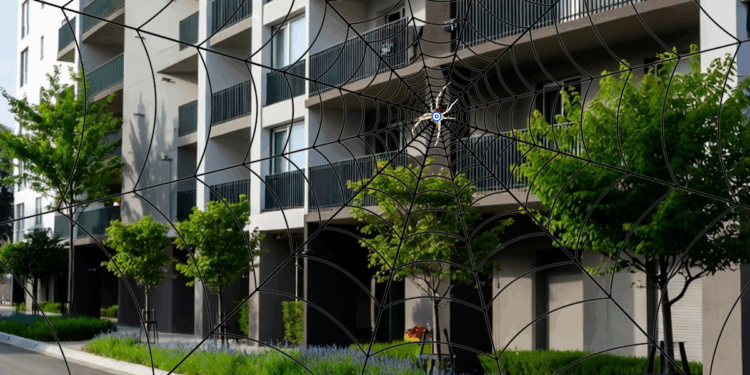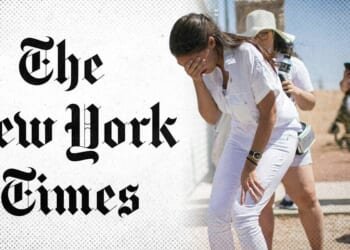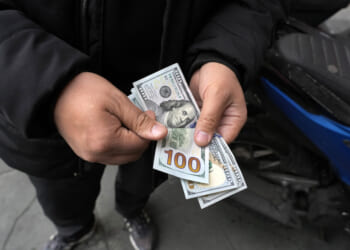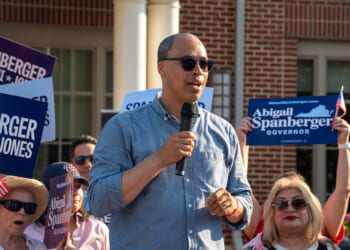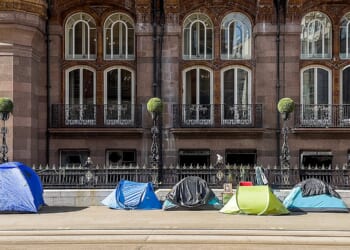There is no question that we have a housing problem today. There aren’t enough homes on the market in relation to the number of people who want to buy. This dearth drives up prices and puts buying a home out of reach for many in lower-income brackets.
For those who are trapped in poverty, home ownership is a dream that is entirely unattainable. Enter public housing, a.k.a. the attempt at gentrification that has backfired spectacularly.
There have always been poor neighborhoods, to be sure, though historically they weren’t necessarily what we associate with poor neighborhoods today. People who lived in them sorted themselves according to their goals, family type, education, income level, etc. They may have been poor, but they were building wealth all the same. As the families in those communities earned more income, they moved closer to the edges until they could finally afford something better in a different neighborhood.
Conversely, poor neighborhoods today tend to wreak havoc in communities. Progressive reformers and activists in the 1950s and ‘60s decided to force upward mobility in poorer areas by providing public housing. This ideologically motivated idea utterly failed, inevitably trapping people in poor neighborhoods instead of getting them out.
Public housing was supposed to help the poor, the infirm, and the elderly. Progressives believed (and still do) that dissuading homeownership by demolishing older homes and providing rental housing on the cheap would save poor neighborhoods. It was the opposite.
According to Howard Husock, an American Enterprise Institute fellow who has spent a good deal of his career researching urban housing development, “Clearance meant not only that their homes were taken at whatever compensation level was deemed appropriate at the time but also that future appreciation of the land was denied the owners.”
In other words, when the government bought out and cleared older houses to make new public housing, tenants had no means by which to garner wealth through land ownership, thus taking away a crucial rung on the economic ladder.
Zohran Mamdani, the mayoral front-runner in New York City, has come out in favor of more public housing — a central issue in that city’s election. He has several ideas to “help” New Yorkers with their economic woes by further disenfranchising them. Over the next 10 years, he hopes to invest $100 billion in more public housing. Mamdani calls himself a “democratic socialist,” but his policies are redistributionist and more akin to statism.
Mamdani’s public housing proposal is a ploy to push the people of New York into the World Economic Forum mindset: “You will own nothing and be happy.” However, that experiment has been tried over and over again — and has failed over and over again. Government-owned housing and rent control are traps designed to keep people socioeconomically stagnant and malleable.
Housing is definitely an issue nationwide, not just in New York City. Enough so that the Senate and the president are seeking to address it. According to Wall Street Journal columnist Jason L. Riley:
The Trump administration has proposed a two-year time limit to help address the problem. “I’m not sure whether that would be too draconian,” Mr. Husock said. But he supports “the idea that we should align our housing policy with other social policies. There’s a five-year limit on cash welfare, for example. Unlimited time in public and subsidized housing doesn’t make sense.” Another reform he advocates: Stop forcing people to pay more in rent as their income increases. “Right now, there’s this terrible disincentive for self-improvement and for marriage. If you marry and have two incomes, you pay more in rent.”
At the end of the day, government interference is exacerbating the housing problem. It perpetuates the poverty cycle and forces people into unnatural conditions and communities, causing far greater problems like crime, drugs, and discontent. Public housing is a Democrat trap.

